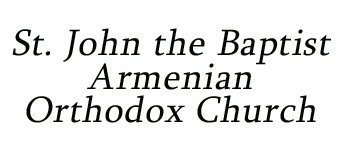EVE OF GREAT LENT
POON PAREGENTAN
Poon Paregentan is the last Sunday preceding the six-week, forty-day period of Great Lent. It falls seven weeks prior to the Resurrection Sunday (Easter) and, along with the Feast of the Resurrection (Easter), is a moveable feast within an interval of thirty-five days between February 1 and March 7. The theme of Poon Paregentan is recalling man’s life of perfect harmony with God in the Garden of Eden before his fall from Grace. The hymns and odes of the day recall the story of God creating mankind in His image and likeness, placing man sinless in a bountiful garden paradise and allowing him to share in His divinity. The Lenten period of strict fasting, penance and reconciliation ultimately prepares us for Easter—the Feast of the Glorious Resurrection of Our Lord Jesus Christ.
In the Armenian Church, all Lenten Sundays have a particular theme. The Church provides these themes for the purposes of communicating the teachings of Christian life and of preparing the penitents for communion with Jesus Christ.
- First Sunday – Sunday of the Eve of Great Lent
- Second Sunday – Sunday of the Expulsion
- Third Sunday – Sunday of the Prodigal Son
- Fourth Sunday – Sunday of the Steward
- Fifth Sunday – Sunday of the Judge
- Sixth Sunday – Sunday of the Advent
THE CLOSED ALTAR (PAGYAL KHORAN)
On Saturday, (the eve of Poon Paregentan Sunday) the altar curtain is closed during Vespers Service for the forty days of Great Lent and does not get reopened until Palm Sunday. There is no offering of Holy Communion during Divine Liturgy until Palm Sunday.
The Liturgy is celebrated with closed curtain on Poon Paregentan (Great Lent) Sunday.
In addition to these two major changes, the following changes also occur to the celebration of Divine Liturgy during Great Lent:
- There is no Kiss of Peace.
- The Holy Gospel Book is not venerated after service.
- Hymns are sung in a penitential manner.
- The organ is not played as congregants are departing from the sanctuary.
- Congregants remain silent when exiting the sanctuary after worship in respect of those who remain to offer devotional prayers.
- Finally, weddings are not celebrated during Great Lent.
ARMENIAN LENTEN SERVICES
The Peace Service, the Rest Service and the Sunrise Service are performed more often during Lent than at other times of the year. (Traditionally, Peace and Rest Services are performed only on Wednesday and Friday evenings.) These three services are part of the Church’s cycle of seven daily worship services but are of particular significance during Lent because they are penitential in nature and remind us of the effort we are making to restore our pure and joyous relationship with God.
The evening Peace Service consists of prayers for peace to end each day. The prayers remind us that God is with us even in the face of trial and temptation.
The Rest Service, which comes just before retiring for the night, asks God’s continuing care through the night. It includes the prayer of St. Nersess.
The Sunrise Service, performed first thing in the morning, reminds us that God is the giver of the light of morning and the light of salvation. Its beautiful prayers and hymns reflect the fresh and serene quality of the most beautiful time of day. This service is performed traditionally on Monday and Wednesday mornings.
Related readings:
- Poon Paregentan by Bishop Mesrop
- Poon Paregentan


